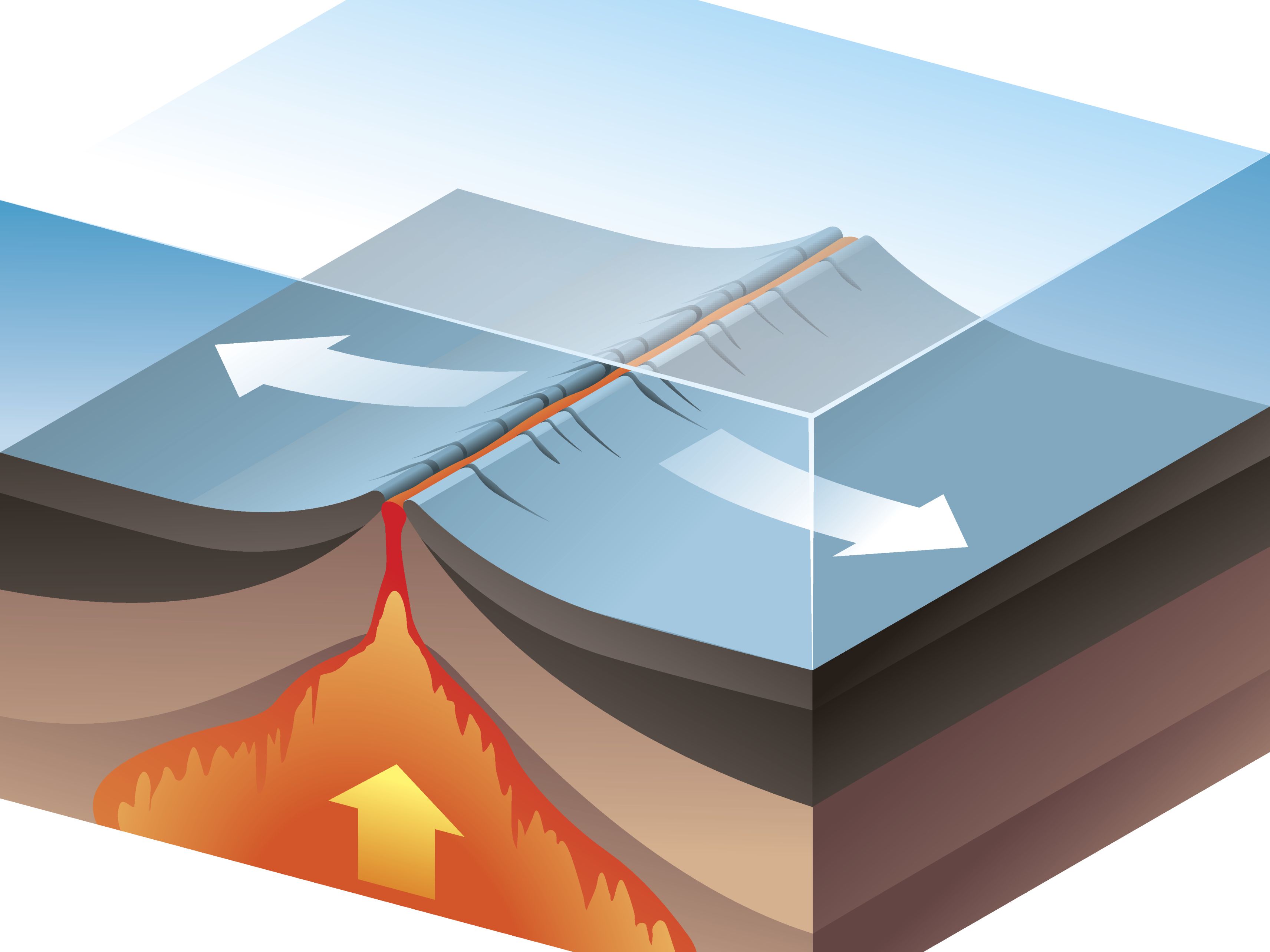1 What causes mountains, volcanoes, and ridges to form? Why do earthquakes happen? All of these things happen because of the movement of the earth’s tectonic plates. These “plates” form the top part of the earth, called the earth’s crust. They are constantly moving.
2 The crust can be thought of as a mixture of solid and liquid, like crackers floating on a bowl of hot soup. The soup (the lava) is gently stirred by currents below. The crackers (the plates) move slowly and gently, but there’s friction where two plates push against each other. When one suddenly gives way, a big change occurs.
4 One plate may slide under the other. This may cause a volcanic eruption. An example of this can be found in the Northwestern U.S., where a line of volcanoes stretches from California to Canada.
5 Plates can pull away from each other. Then magma wells up in between. Magma is lava that’s still under the ground. The built-up magma creates a ridge. An example of this is occurring under the Atlantic Ocean, where the seafloor is expanding as molten rock pushes up, and it’s widening the distance between America and Europe by about 3 inches each year!
6 Plates can push against each other, going in opposite directions. One can move north and one south, or one east and one west. A split occurs between the two, called a fault. This allows the two plates to move in opposite directions. An example of this is the San Andreas Fault in California.
7 Two plates may crash directly into each other. This causes each to buckle up and creates mountain ranges. An example of this is the Himalaya mountain range, where the plate carrying India crashed into the plate carrying Asia.





